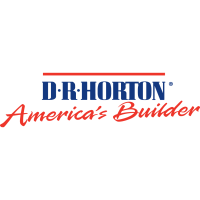$DFS
$FOR
$GSBC
$ZION
$PLD
$TRV
$SRCE
$ALK
$BFST
$FFBC
$EQBK
$ERIC
$SMBK
$STLD
$WTFC
$UNP

Postes
11Winners of the US construction crisis?
The USA is in the midst of a deep construction crisis that has been worsening for years. High construction costs, rising mortgage rates and a severe shortage of affordable housing are weighing on the real estate market. Millions of Americans are feeling the effects.
The construction crisis: a problem that moves America
The dream of home ownership is becoming unattainable for many. And it's not just homeowners who are affected by rising costs, renters are too. This crisis has the potential to pose a lasting threat to the country's social and economic stability, making it a key issue in the recent elections.
To make matters worse, demand for housing remains high, while construction activity cannot keep pace. Particularly in the growing Sunbelt regions, where people are moving due to the low cost of living and better climate, housing construction is falling short of expectations. This shows a systemic failure that is attributable to both economic and regulatory causes.
The political debate has focused on two main questions: how can the Federal Reserve reduce financing costs through its interest rate policy? And how can innovative ideas such as "Freedom Cities" bring new momentum to housing construction? While Democrats rely on state subsidies and support programs, Republicans under Donald Trump have taken a different path. They are advocating radical deregulation and the creation of planned cities to increase supply and promote innovation.
Causes of the housing market crisis: how did it come about?
The causes of the current construction crisis are diverse and deeply rooted. A combination of economic, regulatory and social factors has caused the US housing market to falter more and more.
A key factor is rising construction costs, which have been fueled by several developments in recent years. Firstly, global supply chain issues, particularly during and after the COVID-19 pandemic, have driven up the price of building materials. Secondly, there is an acute shortage of skilled workers in the construction industry in the USA, which is pushing up wages and delaying projects. In addition, high land prices in urban centers are making residential construction expensive, especially in cities such as San Francisco, New York and Los Angeles.
Another driver of the crisis is the high mortgage interest rates, which are closely linked to long-term capital market interest rates. Even though the Federal Reserve has recently lowered key interest rates slightly - the deposit rate is currently between 4.5 and 4.75 percent - mortgage rates remain high. This is because these rates are not determined directly by the Fed, but by the capital market, which reflects the risks and return expectations of investors. The result is that buyers have less financial leeway, which further dampens demand for housing.
Finally, bureaucracy also plays a key role. Lengthy approval processes and complicated regulations make homebuilding a time-consuming and costly endeavor in many states. Even in regions with high demand, it often takes years before new construction projects can be realized. These regulatory hurdles significantly increase the bottleneck in the housing market.
Freedom Cities and interest rate cuts: Two ways out of the crisis
In view of the complex problems of the housing market, two possible solutions were discussed: lowering mortgage interest rates through the Federal Reserve's interest rate policy and the creation of "Freedom Cities", as proposed by Donald Trump.
The influence of the Federal Reserve
The Federal Reserve's interest rate policy plays a central role in the real estate market, as it indirectly influences the financing costs for buyers. The recent reduction in the deposit rate to between 4.5 and 4.75 percent could contribute to a fall in long-term capital market interest rates and therefore also mortgage rates. However, this process is slow and dependent on developments on the global financial markets. In the short term, the relief for buyers will therefore remain limited.
At the same time, the effect of the interest rate cuts on residential construction is double-edged. While cheaper loans could boost demand, supply remains limited by the aforementioned regulatory and cost challenges. Additional measures are therefore needed to solve the market's structural problems.
Freedom Cities: a visionary solution?
The "Freedom Cities" represent an innovative approach to tackling the construction crisis. Donald Trump is proposing to create ten new cities that will revolutionize housing construction through deregulation and innovative approaches. The focus is on reducing bureaucracy, speeding up approval processes and using modern technologies.
These planned cities could be built in less densely populated regions in particular, where land and infrastructure are available. One example is the Presidio National Park near San Francisco, which could be developed for 120,000 new residents. Not only residential areas could be created here, but also commercial and innovation centers that create jobs and stimulate the economy.
The "Freedom Cities" could also be a testing ground for new technologies in the construction industry, such as the use of 3D printing, prefabricated building elements or sustainable building materials. In the long term, these innovations could help to reduce costs in residential construction and increase efficiency.
The big construction companies: Winners of the construction crisis?
The US construction industry is dominated by a few large companies that specialize in different segments. D.R. Horton, Lennar Corporation, PulteGroup and Toll Brothers are among the biggest players and could benefit from developments in the housing market.
$LEN (-2,11 %)
The all-rounder
Lennar Corporation pursues a differentiated strategy that encompasses both affordable housing and upscale real estate. The company places great emphasis on sustainability and modern construction concepts, which could make it an important player in the Freedom Cities. Lennar is particularly strong in regions with mixed-use projects - from residential areas to commercial real estate.
$PHM (-1,86 %) The flexible provider
PulteGroup offers a wide range of residential solutions, from single-family homes to condominiums. This flexibility allows the company to respond to different market segments and economic conditions. Especially in regions with growing demand for affordable housing, PulteGroup could play an important role.
$TOL (-1,62 %) The luxury specialist
Toll Brothers specializes in high-quality properties in premium locations. The company serves an affluent target group and could particularly benefit from exclusive projects in the Freedom Cities. Despite the general construction crisis, demand for luxury real estate remains stable in certain markets.
$DHI (-2,32 %)
Market leader in affordable housing
D.R. Horton, the undisputed leader in U.S. homebuilding, has carved out a central position in the industry with its specialization in affordable homes and impressive construction output. And that could be the big advantage here.
The company's projects address one of the country's biggest challenges: the severe shortage of affordable housing. In the 2024 financial year, D.R. Horton completed 89,690 homes, an increase of 8 % on the previous year. Ur for comparison. Vonovia, Europe's largest housing company, has 550,000 apartments in its portfolio. Dr. Horten is building that up in less than 7 years. With a turnover of USD 36.8 billion and a return on equity (ROE) of 19.9 %, the company is one of the most profitable players in the industry.
Focus on affordable homes - a clear competitive advantage
One of the key secrets of D.R. Horton's success is its focus on affordable housing solutions. 69% of the homes sold are in a price segment below USD 400,000. This is an invaluable advantage, especially in a market where access to property is made difficult for many Americans by high mortgage rates and high construction costs. The company's target audience is primarily first-time buyers and middle-income families - precisely those segments of the population that have been particularly affected by the construction crisis.
The affordable prices are the result of high cost efficiency: D.R. Horton relies on standardized construction processes, extensive use of prefabricated components and optimized logistics. This efficiency enables the company to remain competitive even in a challenging market environment.
Broad market presence and economies of scale
With a presence in 125 markets and 36 states, D.R. Horton is not only broadly positioned geographically, but can also take advantage of regional growth opportunities in a targeted manner. The company plays a particularly important role in the high-growth regions of the Sunbelt, where demand for affordable housing is especially high. Thanks to its extensive market presence, D.R. Horton achieves economies of scale that enable the company to implement projects faster and more cost-effectively than many of its competitors.
The strategic focus on regions with high demand and strong population growth ensures that D.R. Horton will continue to benefit from favorable demographic trends in the future. Increasing urbanization in the Sunbelt states and the ongoing migration to these regions offer the company long-term growth opportunities.
Adaptation
to
the
difficult
interest rate environment
Despite the persistently high level of interest rates, D.R. Horton has proven that it can react flexibly to changes in the market. With innovative financing models, including mortgage subsidies and interest rate incentives, the company creates additional incentives for buyers to purchase a home. These measures help to stabilize demand even in a difficult economic environment.
In addition, D.R. Horton is increasingly building smaller, more affordable homes to further lower the barrier to entry for buyers. This adaptability shows that the company is able to respond quickly and effectively to market challenges - a crucial factor for long-term success.
Key role
in
visionary
projects?
D.R. Horton is not only in a position to master existing market challenges, but also to play a leading role in visionary projects such as the "Freedom Cities" proposed by Donald Trump. These planned cities, which aim to create affordable housing through deregulation and innovative construction approaches, offer enormous growth opportunities. With its experience in building large-scale residential projects and its ability to work cost-effectively, D.R. Horton is predestined to become a key player in such developments.
In addition, the company is investing in new technologies, such as the use of 3D printing in construction or prefabricated modules, which can further increase efficiency. In the long term, such innovations could help to further reduce construction costs and set new standards in the industry.
Financial stability and shareholder friendliness
D.R. Horton not only impresses operationally, but also with its strong financial position. The company has net liquidity of USD 7.6 billion and keeps its debt ratio at a very low level of 18.9%. This financial strength enables D.R. Horton to react flexibly to market developments and make targeted investments in growth projects.
The company is also attractive for shareholders: the dividend was increased by 33% to USD 0.40 per share in the 2024 financial year. In addition, D.R. Horton plans to carry out share buybacks worth USD 2.4 billion in the coming year. These measures show that the company is not only profitable, but is also committed to sustainable long-term value growth for its investors.
A
pioneer
in
in the
industry
With its clear focus on affordable housing, broad market presence and ability to respond flexibly to economic challenges, D.R. Horton is well positioned to benefit from the current construction crisis and future developments. The company proves that it not only recognizes the problems of the market, but also offers innovative solutions to overcome them.
For investors betting on long-term trends such as the ongoing housing shortage and stabilizing interest rates, D.R. Horton is a promising choice. The combination of operational excellence, financial strength and innovation makes the company one of the most exciting investments in the real estate sector
$DHI (-2,32 %) | D.R. Horton Q4 2024 Earnings Highlights:
🔹 Adj EPS: $3.92 (Est. $4.17) 🔴
🔹 Revenue: $10.0B (Est. $10.22B) 🔴
🔹 Net Income: $1.3B (vs. $1.5B YoY)
🔸 Home Sales Revenue: $8.9B on 23,647 homes closed (UP +3% YoY)
FY25 Guidance:
🔹 Revenue: $36.0B-$37.5B (Est. $39.41B) 🔴
🔹 Homes Closed: 90,000-92,000
🔸 Income Tax Rate: ~24.5%
🔸 Plans to repurchase $2.4B in shares and pay $500M in dividends
Key Financial Metrics:
🔹 Dividend: Increased by 33% to $0.40 per share
🔹 Debt to Total Capital Ratio: 18.9%
🔹 Book Value per Share: $78.12 (UP +15% YoY)
🔹 Cash Flow from Operations: $2.2B
Operational Highlights:
🔹 Net Sales Orders: 19,035 homes (UP +1% YoY)
🔹 Cancellation Rate: 21% (Flat YoY)
🔹 Homes in Inventory: 37,400 (of which 25,700 unsold)
🔹 Rental Operations Revenue: $704.8M, pre-tax income: $99.9M
Capital Allocation:
🔹 Share Repurchases: 3.4M shares for $561M in Q4; $1.8B YTD
🔸 Remaining stock repurchase authorization: $3.6B
🔹 Dividend Payments: $395.2M in FY24
Management Commentary:
🔸 David Auld, Executive Chairman:
"Our Q4 net sales orders increased slightly to 19,035 homes. While affordability and mortgage rate uncertainty remain challenges, we continue to support demand with incentives like mortgage rate buydowns and smaller floor plans."
Liquidity & Leverage:
🔹 Cash Balance: $4.5B
🔹 Available Credit Facility: $3.1B
🔸 Total Liquidity: $7.6B
Given the continued stability of real estate prices and expected demand driven by factors such as urbanization and immigration (at least in the US), I see several sectors and companies benefiting from this trend:
REITs, $DHI (-2,32 %) , $LEN (-2,11 %) , $HD (-0,5 %) , $LOW (-0,33 %) , $CAT (-0,38 %)
However, there has already been a good boost in the current YTD.
Have a nice Sunday everyone!

One of the best stocks from the Ultimate Homer.
Warren Buffett held Dr. Horton for only one year and sold the entire position in December 2023. Since then, the stock has risen another 24%.
How is the Häusle Bauer business doing?
Source
https://investor.drhorton.com/news-and-events/press-releases/2024/07-18-2024-113040388

Adjusted price targets of individual analysts
GG
Create, create, build houses!
The demand for housing in the USA remains high - and no wonder! There is said to be a shortage of several million houses on the American housing market. For years, companies such as $LEN (-2,11 %)
$DHI (-2,32 %) or $TOL (-1,62 %) . D.R. Horton, Lennar Corporation and Toll Brothers are leading players in the US residential construction and real estate development market. They specialize in the construction and sale of residential properties.
Do you think the companies will continue to develop as well as they have in the coming years? Why are you interested in the sector or not?

Meilleurs créateurs cette semaine